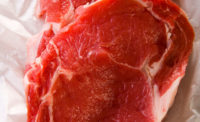On Jan. 10, 2014, the Food Safety and Inspection Service (FSIS) released its updated Directive 10,240.4, Rev. 3, entitled: “Verification Activities for the Listeria monocytogenes (Lm) Regulation and the Ready-To-Eat (RTE) Sampling Program.”
In conjunction with the directive, FSIS also posted its revised Compliance Guideline: “Controlling Listeria monocytogenes in Post-lethality Exposed Ready-to-Eat Meat and Poultry Products” (Guideline) and “Resource 1 - Chart of RTE vs. NRTE Products.”
Although the directive is similar to the previous version, there are three changes of note:
First, the directive incorporates instructions for collecting samples under the agency’s new RTEPROD sampling project. In 2013, FSIS eliminated the random ALLRTE and RTE001 sampling projects and created two new sampling projects: RTEPROD_RISK for post-lethality exposed RTE products selected according to risk posed, and RTEPROD_RAND for both post-lethality exposed and non-post-lethality exposed RTE products randomly selected.
Second, the directive instructs inspectors to ensure an establishment holds all product implicated by a product sample as required by regulations. In this regard, the directive provides guidance to the inspector on how an establishment can support its definition of the implicated lot. For Lm, the lot will include all product run over common food contact surfaces, “clean-up to clean-up.” However, the amount of product implicated could be expanded if there is potential cross-contamination between lines, e.g., shared personnel, utensils, or brine. In addition, the lot could be expanded if common RTE raw materials are used across multiple lines or production days. Finally, the inspector should consider whether ingredients, such as black pepper or other spices, are added to the RTE product post-lethality. As always, it is advisable for the establishment to come to an understanding as to what product could be implicated before a sample is taken.
Third, the directive formalizes agency policy that if an establishment changes its routine practices, without justification, in advance of FSIS sampling, FSIS may provide less than one days notice.
In the Compliance Guideline and Resource 1, FSIS provides updated guidance on the types of products that may be labeled as not ready-to-eat (NRTE). If a product is NRTE, it is not subject to Lm testing.
According to the guideline, certain products, such as hams or meat casseroles, that receive a full heat lethality nonetheless may be considered NRTE if the product meets certain criteria:
- There is no standard of identity defining the product as RTE, such as 9 CFR § 319.180 “cooked sausage,” and
- The common or usual name of the product is not ordinarily understood to apply to an RTE product.
- If the product can be designated as NRTE under the criteria above, the establishment also must meet certain labeling requirements:
- The principal display panel of the label must indicate the product is NRTE through the use of terms such as “cook and eat,” “cook and serve,” or “cook thoroughly;”
- The label must bear the Safe Handling Instruction panel;
- The label provides cooking instructions (not “heating instructions”), including the minimum internal temperature to be achieved for the product to be deemed “cooked;” while specific cooking instructions are not required for NRTE products, FSIS highly recommends that validated cooking instructions be provided for NRTE products that appear RTE; and
- The Nutrition Facts declarations must be on a ready-to-cook basis and not on a ready-to-serve basis.
Finally, the HACCP category must match the product: “It is FSIS’s expectation that products in the fully cooked – not shelf stable category will be considered RTE.”





Report Abusive Comment